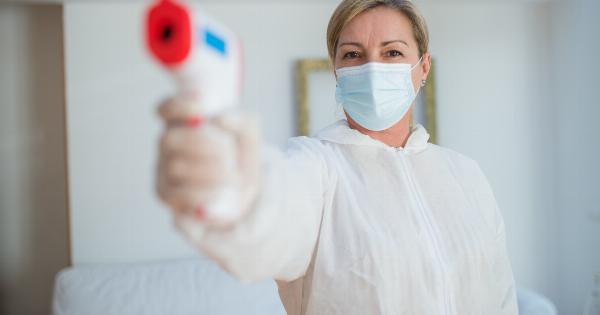Syphilis, a sexually transmitted infection (STI), has been making a comeback, with a significant rise in the number of cases reported worldwide.
This resurgence has sparked concern among healthcare professionals, as it poses a serious public health challenge. In this article, we will explore the reasons behind the alarming increase in syphilis cases and its implications on society.
The History of Syphilis
Syphilis has been plaguing humanity for centuries. First documented in the late 15th century, the disease quickly spread across Europe, causing widespread panic.
It is believed to have originated in the New World and was brought back to Europe by explorers. Over the years, syphilis has gone through various phases of outbreak and decline.
Syphilis: A Reemerging Threat
Although syphilis was on the decline for several decades, recent data suggests a concerning trend of reemergence. In many parts of the world, including developed countries, the incidence of syphilis has been steadily rising.
This surge in cases has alarmed healthcare professionals and researchers, who are now grappling with the complexities of this persistent infection.
Risk Factors for Syphilis Infection
Several factors contribute to the increased risk of syphilis infection. One of the primary reasons is the change in sexual behaviors and attitudes towards safe sex practices.
With the advent of online dating platforms and hookup apps, casual sexual encounters have become more common, leading to a higher chance of exposure to STIs like syphilis.
Additionally, decreased public awareness about safe sex and the importance of regular testing has played a part in the resurgence of syphilis.
Many individuals are not aware of the risks associated with unprotected sex and therefore engage in risky behaviors without taking necessary precautions.
Escalating Rates of STIs
The rise in syphilis cases is not an isolated trend. It is part of a larger problem of increasing rates of sexually transmitted infections (STIs) worldwide.
Syphilis, along with other STIs such as gonorrhea and chlamydia, has been on the rise in recent years. This surge is deeply concerning as it poses not only individual health risks but also threatens public health as a whole.
Consequences of Untreated Syphilis
Syphilis, if left untreated, can have serious health consequences. The infection progresses in stages, with each stage presenting its own set of symptoms and complications.
Initially, individuals may experience painless sores or rashes, which can easily go unnoticed. However, without proper treatment, the infection can spread to the organs, including the heart and brain, leading to cardiovascular disease, neurological disorders, and even death.
Challenges in Diagnosis and Treatment
Diagnosing syphilis can be challenging as the symptoms can mimic other conditions. Healthcare providers often rely on blood tests to confirm the presence of the infection.
However, these tests may not detect the disease during the early stages, leading to delayed diagnosis and treatment. Additionally, access to healthcare services and testing facilities may be limited for some individuals, further hindering early detection.
Treating syphilis involves a course of antibiotics, typically penicillin. However, the increasing prevalence of antibiotic resistance poses a significant challenge in managing syphilis cases.
This resistance further underscores the urgency of prevention strategies and the need for comprehensive sexual health education.
Prevention and Control Efforts
Addressing the alarming rise in syphilis cases requires a multifaceted approach.
Effective prevention strategies involve increasing awareness about safe sex practices, encouraging regular testing, and promoting the use of barrier methods, such as condoms. Public health campaigns aimed at educating individuals about the risks of syphilis and other STIs can play a vital role in curbing the spread of the infection.
Furthermore, healthcare systems need to ensure the availability of affordable and accessible testing facilities, especially in marginalized communities where the burden of syphilis is often higher.
By offering widespread testing and timely treatment, healthcare providers can minimize the impact of syphilis on affected individuals and prevent further transmission.
The role of Sex Education
Comprehensive sex education plays a crucial role in preventing syphilis and other STIs. By equipping individuals with accurate information about sexual health and safe practices, we can empower them to make informed choices.
Sex education should be a part of school curricula, covering topics such as consent, contraception, and the prevention and management of STIs.
Providing individuals with the knowledge and tools to protect themselves against syphilis and other STIs is essential in reducing the prevalence of these infections.
By addressing the root causes and risk factors, we can hope to reverse the alarming increase in syphilis cases and create a healthier future for all.






























